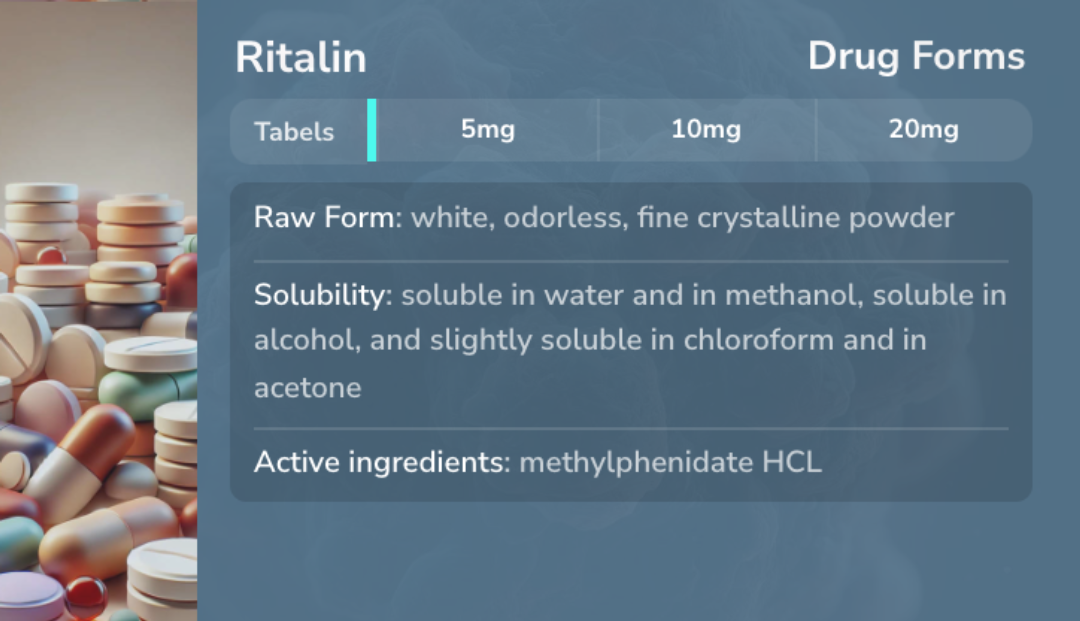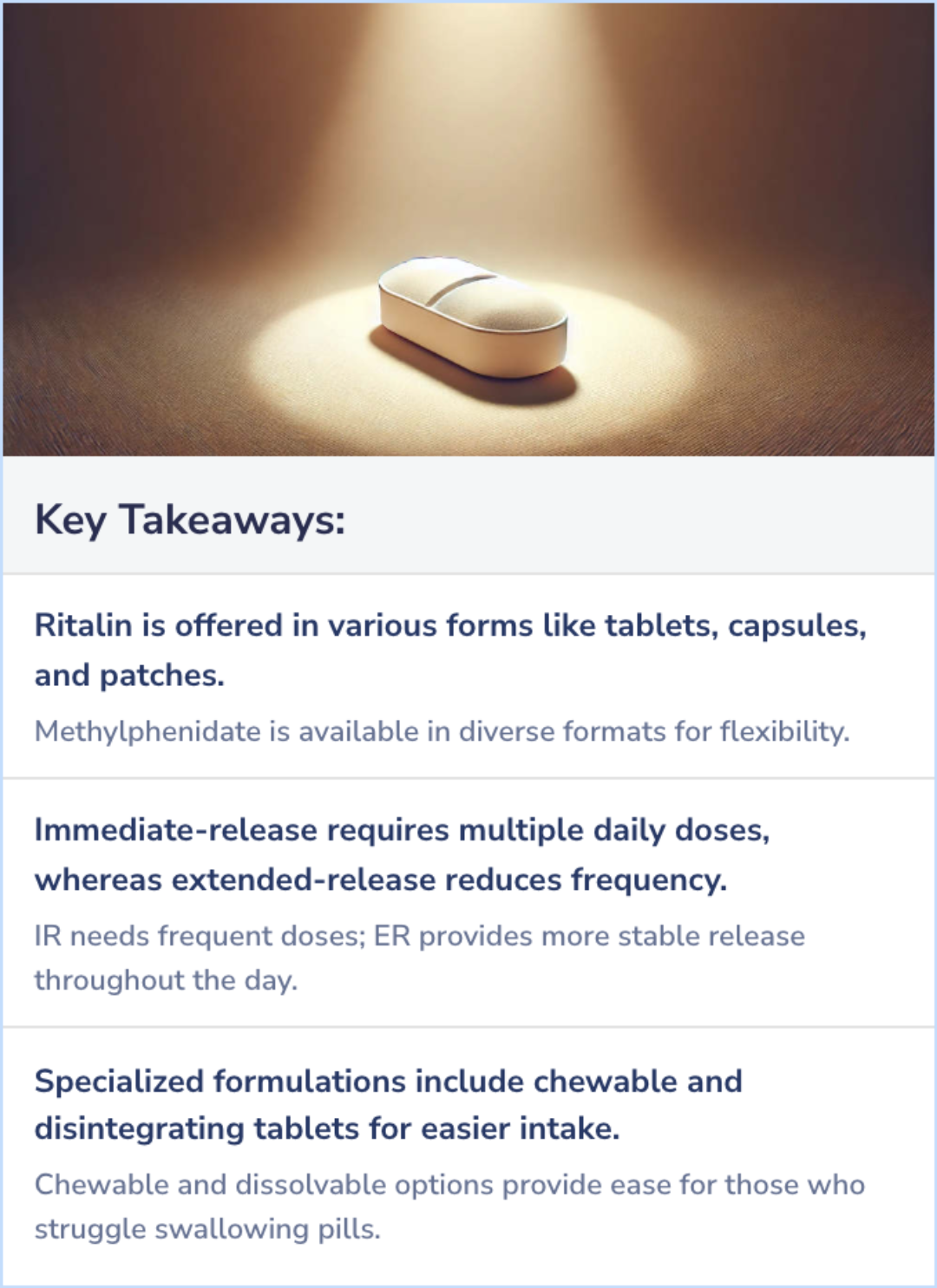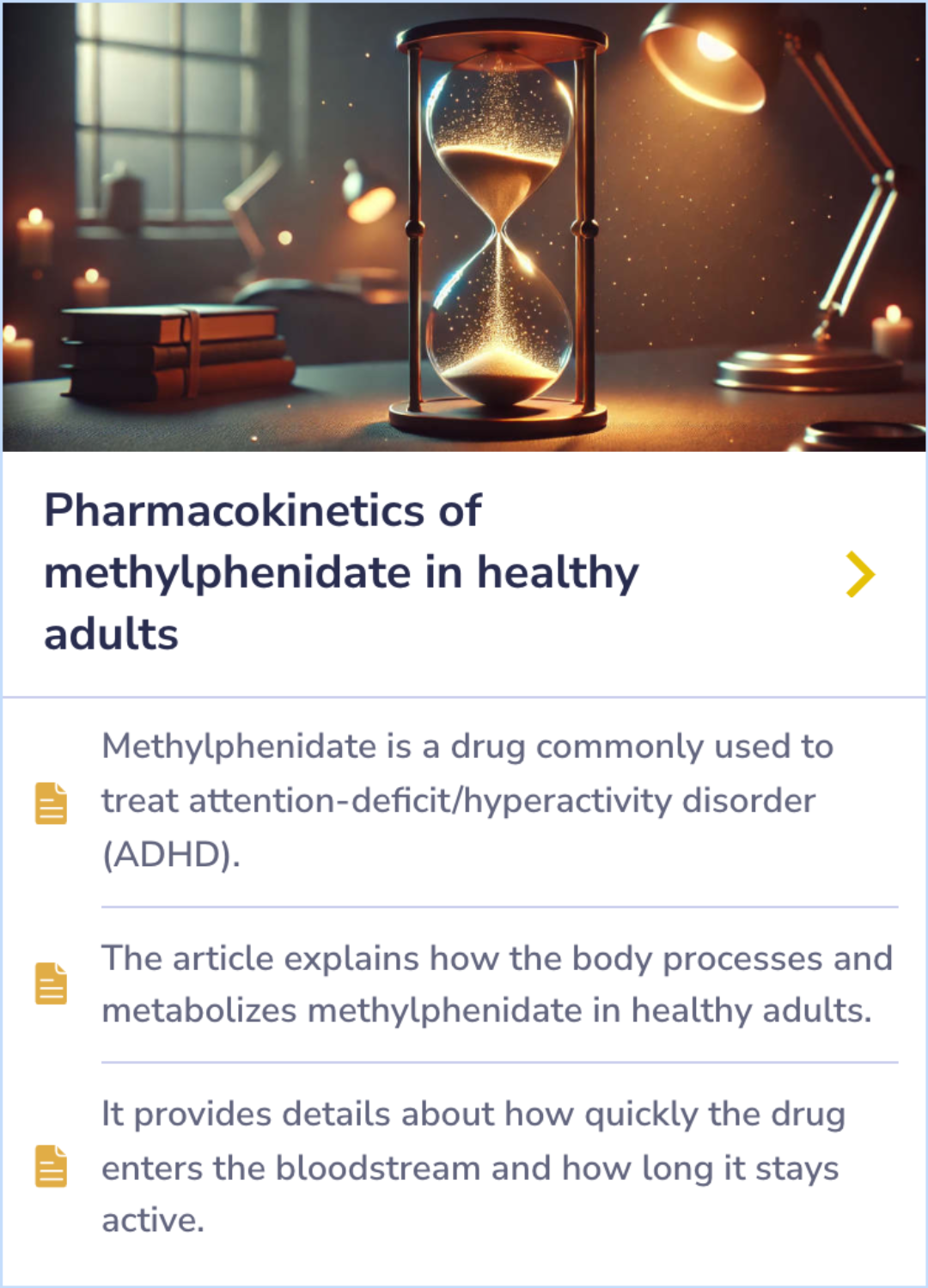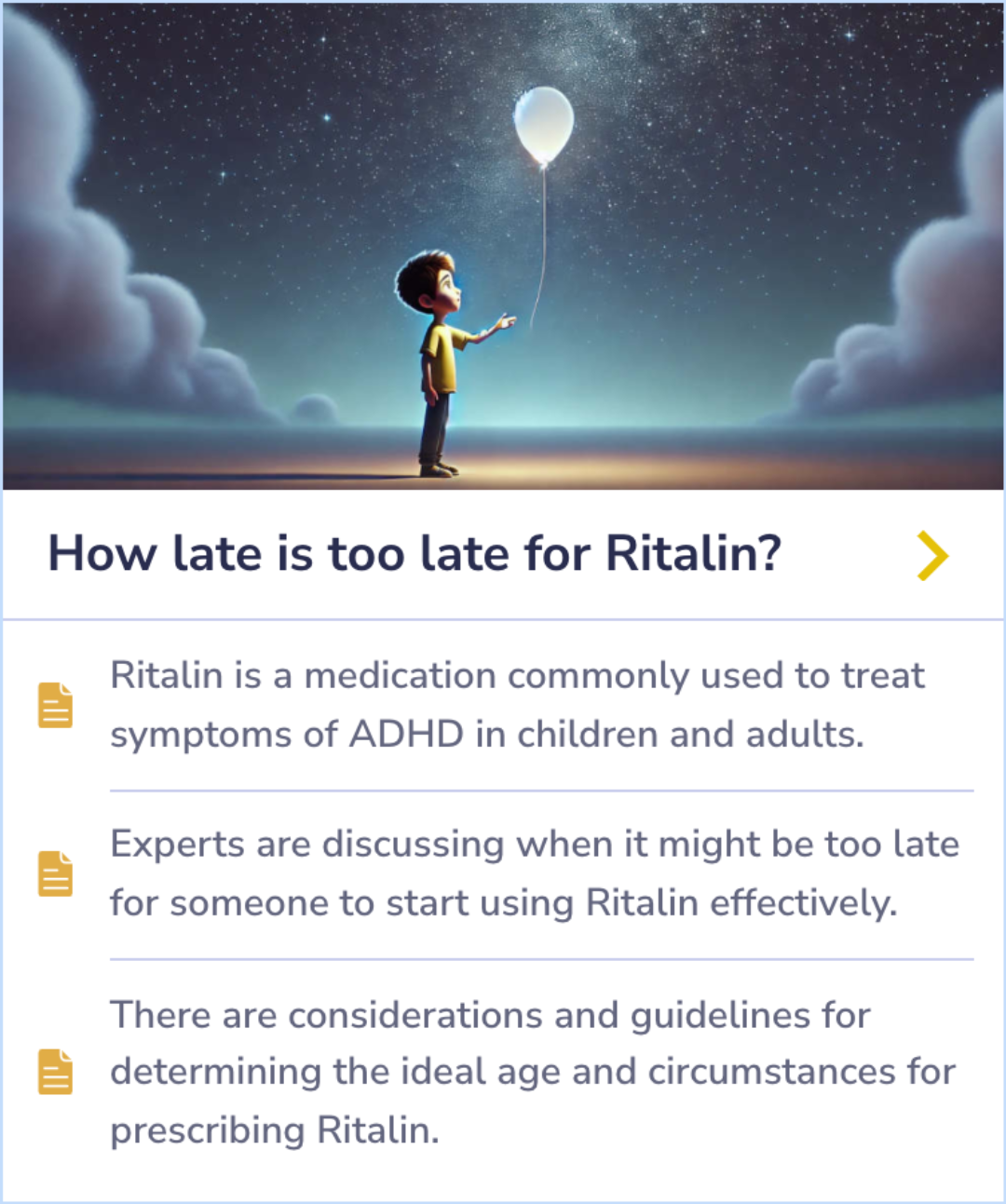Ritalin
Evidence Based Answers
Ritalin Drug Forms Overview
Various Ritalin forms include immediate-release tablets, extended-release capsules, and patches, offering flexibility. IR requires frequent doses while ER provides steady effects. Specialized options ensure consistent drug release.
Published: November 9, 2024

Ritalin options include immediate and extended-release; some aid swallowing.
Overview of Ritalin Drug Forms
Ritalin, also known as methylphenidate, is available in several forms to meet different needs, including immediate-release tablets, extended-release capsules, and a transdermal patch.
These options offer flexibility in dosing schedules and clinical use.
These options offer flexibility in dosing schedules and clinical use.
“
Source Quotes:
Ritalin hydrochloride, methylphenidate hydrochloride USP, is a mild central nervous system (CNS) stimulant, available as tablets of 5, 10, and 20 mg for oral administration; Ritalin-SR is available as sustained-release tablets of 20 mg for oral administration.
For medical purposes, methylphenidate is mainly given orally or, less commonly, as a transdermal patch. Multiple oral formulations are available that categorize according to how quickly the drug is released: immediate (IR), extended (XR or ER), and sustained.
Immediate-Release vs. Extended-Release Forms
Immediate-release (IR) Ritalin tablets act quickly but last for only 1-4 hours, so multiple doses may be required each day. Extended-release (ER) versions provide a steady effect over a longer period, reducing the need for frequent doses.
Choosing between IR and ER formulations depends on an individual’s daily routine and how symptoms change throughout the day.
Choosing between IR and ER formulations depends on an individual’s daily routine and how symptoms change throughout the day.
“
Source Quotes:
Methylphenidate is a short-acting stimulant with a duration of action of 1 to 4 hours and a pharmacokinetic half-life of 2 to 3 hours.
Immediate-release tablets: 5 mg, 10 mg, and 20 mg; Extended-release tablets (24 hours): 18 mg, 27 mg, 36 mg, and 54 mg.
Specialized Ritalin Formulations
Some Ritalin formulations use advanced delivery methods to ensure a consistent release of the drug, like extended-release systems and osmotic-controlled releases.
There are also chewable and orally disintegrating tablets for people who have difficulty swallowing pills.
There are also chewable and orally disintegrating tablets for people who have difficulty swallowing pills.
“
Source Quotes:
Two of the more unique formulations of methylphenidate are its ER sphenoidal oral drug absorption system that has a bimodal release and the osmotic (controlled) release delivery system.
There are chewable tablets (either IR or ER) for children and an IR solution.
Pharmacokinetics and Bioavailability
The rate at which methylphenidate is absorbed varies by its form. Immediate-release tablets reach peak levels faster, while extended-release forms maintain more stable levels over time.
This affects how often the medication needs to be taken and can influence which form is best for daily symptom management.
This affects how often the medication needs to be taken and can influence which form is best for daily symptom management.
“
Source Quotes:
Time of peak plasma concentration: 1.9 hours for immediate-release tablets and 4.7 hours for extended-release tablets.
Absorption: Slow but extensive; relative bioavailability for extended-release tablets 105% in children and 101% in adults (verses immediate-release tablets).
Key Takeaways
Conclusions
Ritalin comes in several forms to accommodate various needs and preferences, including immediate-release tablets, extended-release capsules, and transdermal patches. These different formats ensure flexibility in dosing and clinical application.
Immediate-release options act swiftly but require multiple doses daily. Extended-release varieties provide lasting effects, minimizing dosing frequency and are chosen based on a person’s daily routine and symptom dynamics.
Immediate-release options act swiftly but require multiple doses daily. Extended-release varieties provide lasting effects, minimizing dosing frequency and are chosen based on a person’s daily routine and symptom dynamics.

Evidence Summary
Methylphenidate Absorption and Duration in Healthy Adults
Methylphenidate, commonly prescribed for ADHD, quickly enters the bloodstream and reaches peak levels soon after being taken. In healthy adults, the drug’s absorption rate and metabolism determine how long its effects last, influencing dosing schedules.
The content highlights the specifics of how the body breaks down methylphenidate, offering a closer look at its duration of action and bioavailability in non-ADHD individuals.
The content highlights the specifics of how the body breaks down methylphenidate, offering a closer look at its duration of action and bioavailability in non-ADHD individuals.
Evidence Summary
Ritalin for Focus and Narcolepsy
Ritalin helps improve focus and attention for children and adults with ADHD. It can also be prescribed for narcolepsy, helping manage excessive daytime sleepiness. Patients using this medication must adhere to their doctor’s instructions to ensure safe and effective use.
The drug's use extends beyond ADHD treatment, providing symptom relief for narcolepsy. Careful adherence to prescribed guidelines is emphasized for safety and optimal results.
The drug's use extends beyond ADHD treatment, providing symptom relief for narcolepsy. Careful adherence to prescribed guidelines is emphasized for safety and optimal results.
Evidence Summary
Timing and Effectiveness of Ritalin Treatment
Ritalin is a common treatment for ADHD, but there is ongoing discussion about the best age to begin therapy to maximize its effectiveness and ensure safety. Guidelines offer direction on when starting Ritalin may no longer be optimal.
Age considerations and expert recommendations are in place to guide the timing of treatment, emphasizing both therapeutic impact and potential safety concerns when prescribing Ritalin.
Discussions focus on when Ritalin initiation is most beneficial and how timing affects its outcomes.
Age considerations and expert recommendations are in place to guide the timing of treatment, emphasizing both therapeutic impact and potential safety concerns when prescribing Ritalin.
Discussions focus on when Ritalin initiation is most beneficial and how timing affects its outcomes.


